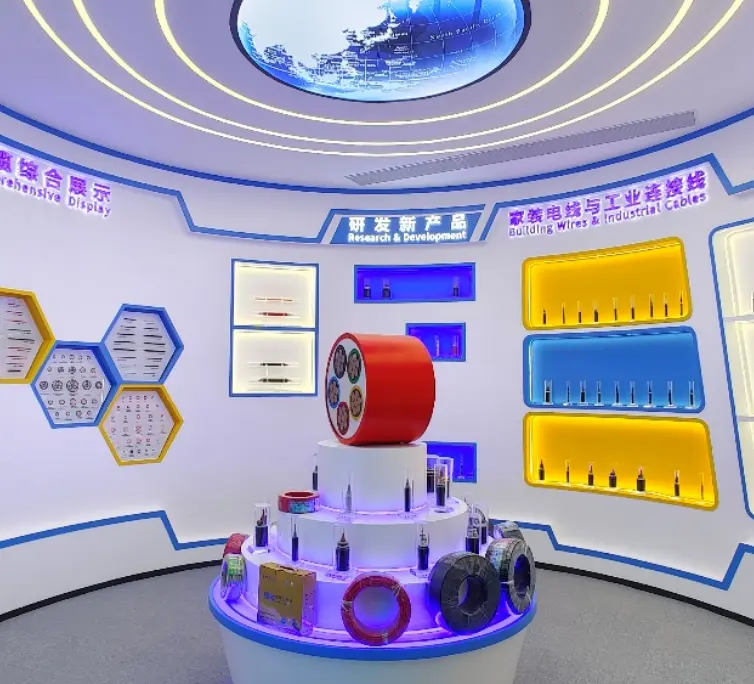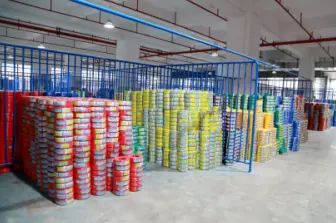Temporary Electricity Safety Hazards: Comprehensive Analysis of Fire Risks When Replacing Flame-Retardant Cables With Ordinary Wires
As the "lifeline" of modern construction projects, the temporary electrical system's safety is directly related to human life and property safety. In recent years, frequent electrical fire accidents caused by using ordinary wires instead of flame-retardant cables have highlighted the serious deficiencies in the safety management of temporary electrical systems on construction sites. This article will deeply analyze the fatal risks posed by this safety hazard from multiple dimensions, including material properties, usage environment, and accident mechanisms.
Fire Hazards Buried by Material Defects
Ordinary PVC insulation starts to soften and deform at 130℃, while the XLPE cross-linked polyethylene material of flame-retardant cables can withstand high temperatures of 250℃. When the circuit is overloaded, the insulation layer of ordinary wires will undergo thermal decomposition in a short time, releasing hydrogen and hydrocarbon combustible gases. Experimental data shows that at three times the rated current, the insulation temperature of ordinary wires can break through 200℃ within 30 seconds, at which point contact with air will cause a flashover.
The special structure of flame-retardant cables forms a triple protection mechanism: the outer flame-retardant sheath delays flame spread, the middle mica tape isolates heat conduction, and the inner cross-linked polyethylene maintains insulation performance. In contrast, ordinary wires produce a "candle effect" when burning, with the melting insulation material continuing to fuel the fire, causing it to spread rapidly along the circuit.
Increased Risks in Harsh Environments
Construction sites' open environments expose cables to multiple tests. Ultraviolet exposure accelerates the aging of ordinary PVC materials, with insulation resistance decreasing by 60% after three months of exposure. Monitoring of a subway construction project showed that the leakage current in ordinary wires in humid environments can be up to eight times that of flame-retardant cables, and such hidden discharge phenomena can easily cause electrical fires. Temporary electrical lines often need to pass through flammable materials such as steel structures and wooden templates.
Fatal Consequences of Accident Chain Reactions
The toxic gases released when ordinary wires burn include lethal substances such as hydrogen chloride and hydrogen cyanide. Tests have shown that the concentration of hydrogen chloride gas produced by burning 1 meter of ordinary sheathed wire can reach a lethal dose in a 10-cubic-meter space. These gases are not only highly corrosive but also combine with water vapor in the air to form acid mist, severely threatening personnel escape.
Construction sites must establish strict temporary electrical management systems, including a three-level acceptance system for materials entering the site, daily insulation testing systems, and mandatory installation of overload protection devices. Practical application in a central enterprise project indicates that adopting flame-retardant cables and intelligent electrical monitoring systems reduced the incidence of electrical fires by 92%. Safety investment is not a cost but the most effective risk hedge.
The intrinsic safety of temporary electrical systems requires the dual guarantee of technical measures and management means. Choosing flame-retardant cables that meet the GB/T5023 standard essentially builds the first line of defense in fire prevention and control. Only by considering every connection as a potential fire source and every meter of cable as a safety defense line can we truly achieve the safety production goal of "preventing problems before they occur." Remember: in the field of electrical safety, there are never "temporary" safety measures.
Latest News & Blog
 English
English  français
français  Deutsch
Deutsch  العربية
العربية  tiếng việt
tiếng việt  ไทย
ไทย  čeština
čeština  Indonesia
Indonesia  Eesti
Eesti  български
български  slovenčina
slovenčina 



